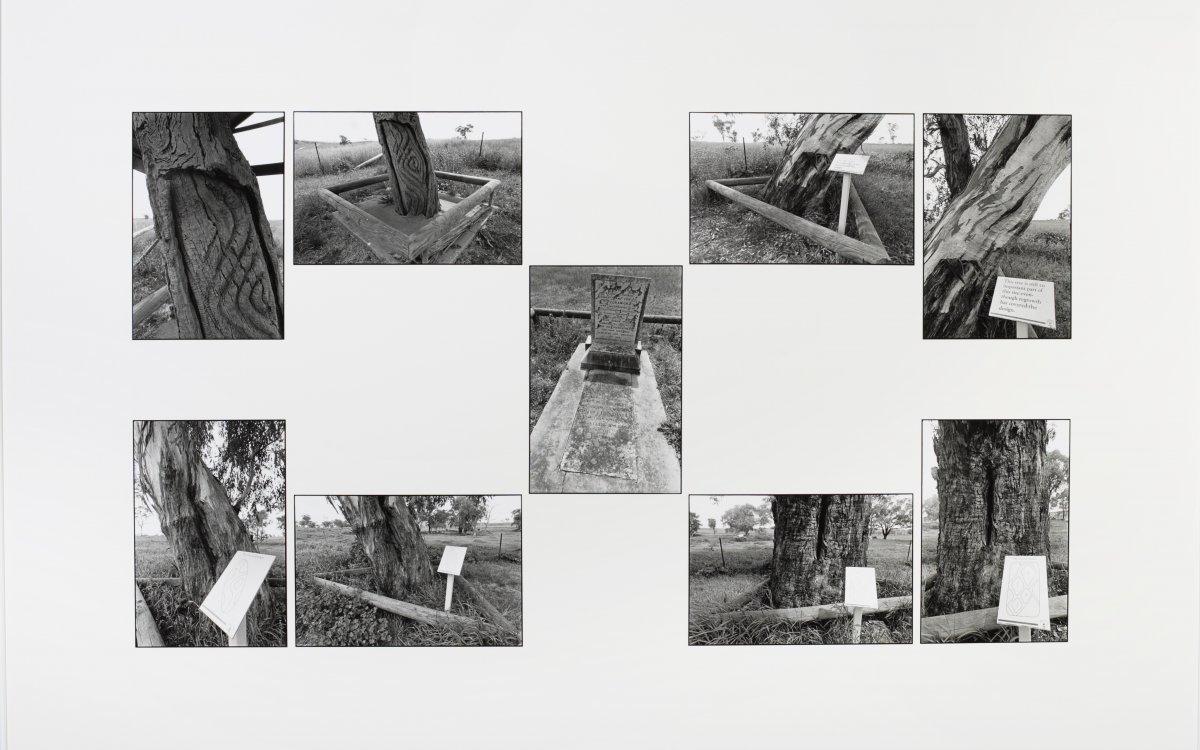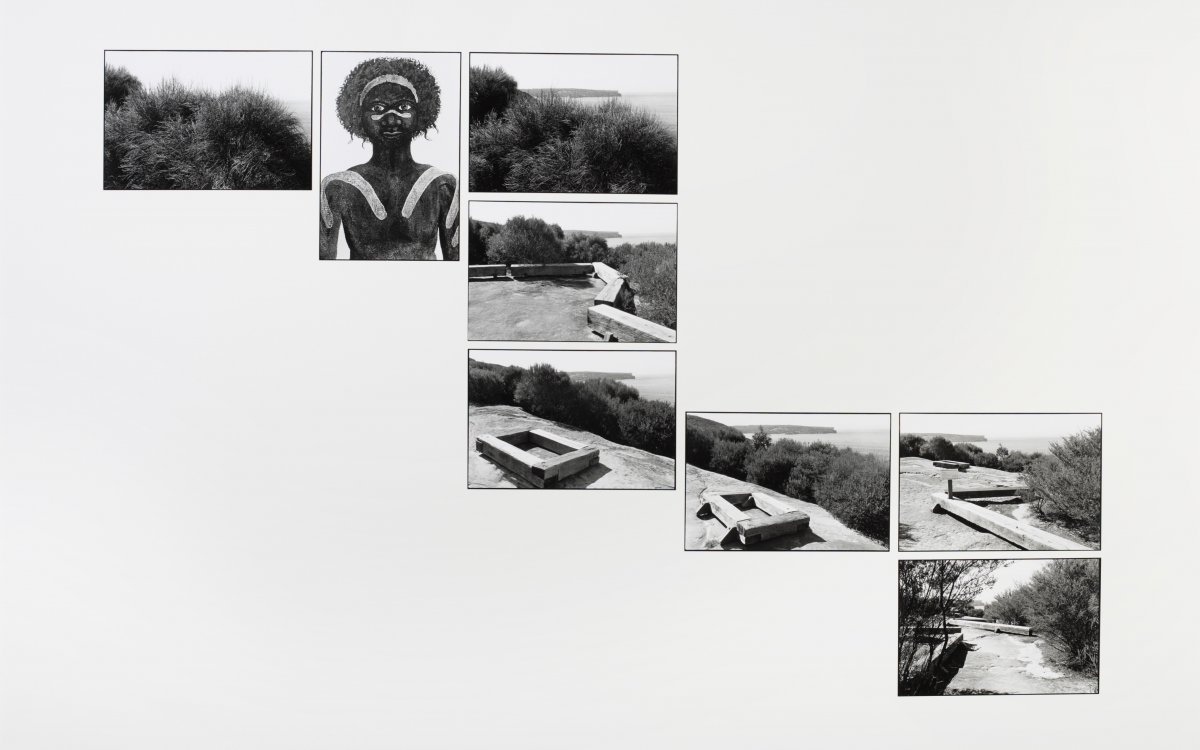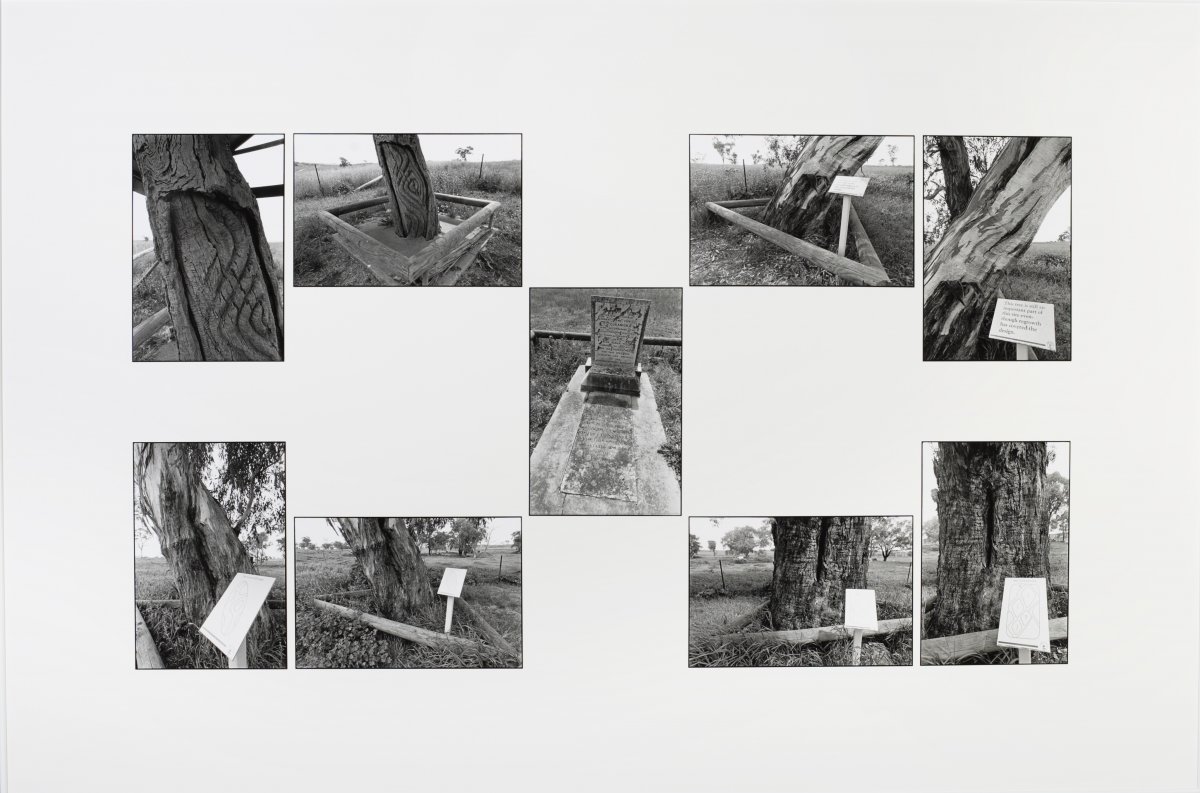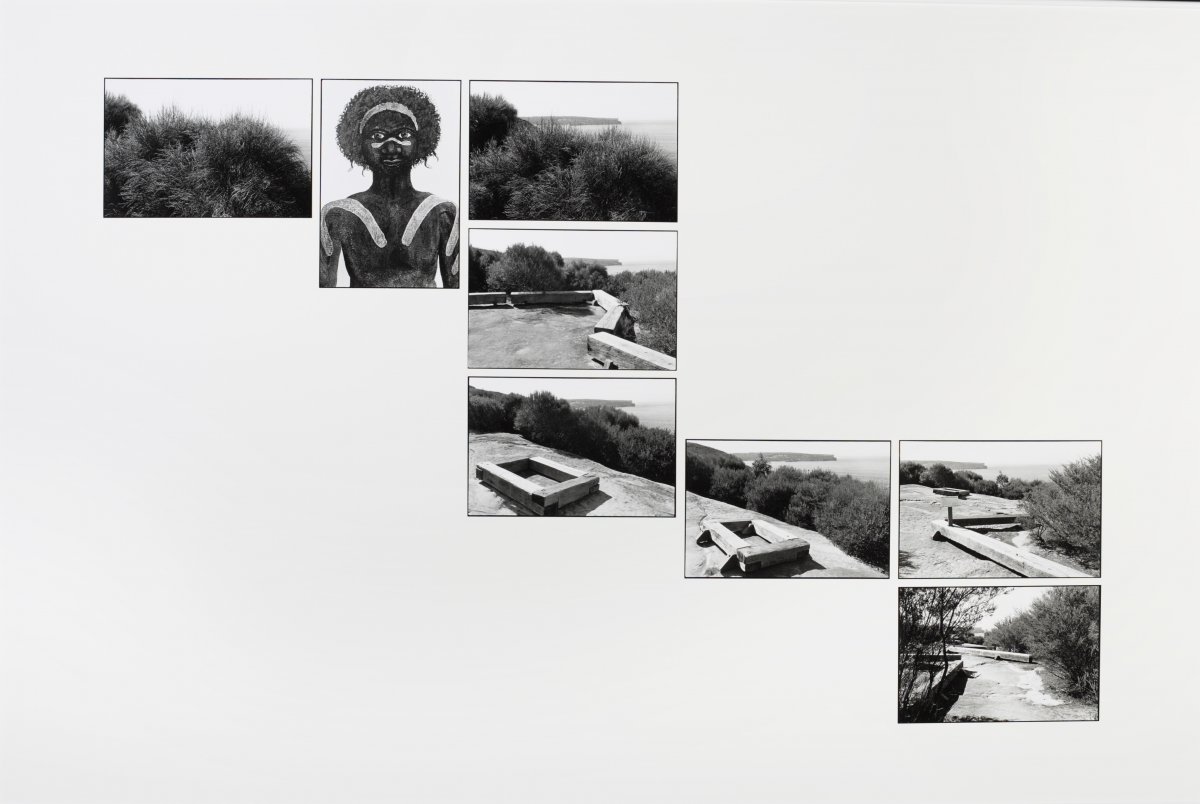
Rhodes, Jon, 1947-. (2001). Most useful native, Wiradjuri, Molong, New South Wales, 2001 [picture] / Jon Rhodes. http://nla.gov.au/nla.obj-147622266
Yuranigh
The work Most useful native documents the grave site of Yuranigh (d.1850), a Wiradjuri man and ‘guide, companion, councillor, and friend’ to explorer and surveyor Sir Thomas Mitchell (1792 –1855). Yuranigh accompanied Mitchell on his 1845-6 journey of exploration into central Queensland.
Yuranigh passed away near Molong probably in April 1850. Mitchell saw to it that his grave was fenced at government expense and later he himself paid for an inscribed headstone. Although the headstone and grave are European in style, carved from local stone and engraved in English, Yuranigh was buried here by his own people, according to Wiradjuri custom. The plot of ground chosen for his final resting place is surrounded by four carved eucalypt trees.

Port Jackson Painter, active 1788-1792 & Rhodes, Jon, 1947-. (2002). Bennelong at Grotto Point, Kuringgai, New South Wales, 2002 [picture] / Jon Rhodes. http://nla.gov.au/nla.obj-147624568
Rock Art, Bennelong and the Port Jackson Painter
Rock art includes paintings on rock surfaces and illustrations carved into rock surfaces. Most paintings occur in rock overhangs and caves, whereas engravings are most commonly found on the top of ridges of headlands, at water level around the bays and coves of the harbour or near a waterhole or campsite, they are generally horizontal rather than vertical.
Woollarawarre Bennelong (c.1764–1813) belonged to the Wangal people and was most well known for being one of the first Aboriginal people to make contact with the people of the First Fleet. He has been called Indigenous Australia's first ambassador.
The rock engravings at Grotto Point are not far from the present-day Manly Cove where Bennelong and another man, Colbey were kidnapped in November 1789. Governor Arthur Phillip was under instruction from King George III to learn more about the local people and to develop a positive relationship with them. The idea was to teach an Aboriginal person to speak English so that they might act as an intermediary between the two cultures. An earlier kidnappee, Arabanoo, had been 'assimilated' only to succumb to smallpox caught from nursing sick Aboriginal children to health. Colbey escaped after only two weeks, but Bennelong stayed on a little longer living in Phillip’s house, learning English and wearing European clothes.
In 1790, Bennelong asked Phillip to build him a hut on a piece of land we now call Bennelong Point, where the Sydney Opera House now stands. He travelled with the Governor and another Aboriginal man, Yemmerrawanie to England in 1792. He explained the customs of his people and attempted to build relationships between the two groups before returning to Australia in 1795. Bennelong died at Kissing Point, near Ryde in 1813.
The image of Bennelong that makes up part of Rhodes’ work Bennelong at Grotto Point is a black and white photograph of this drawing held in the Natural History Museum in London. For many years art historians have hoped to discover some form of documentation that would conclusively prove the identity of the person responsible, the Port Jackson Painter.
The name was coined by the art historian Bernard Smith, in his influential book European Vision and the South Pacific (1960), to describe the unknown First Fleet artist—or possibly artists—who produced a prodigious body of work in Sydney from 1788 to the mid-1790s. Smith based the name on the technical similarities between a number of paintings and drawings that depict the early days of settlement in Sydney. While there are several contenders for the title, most authorities agree that Henry Brewer (c. 1743–1796) is the most likely candidate and Francis Fowkes (fl. 1788–1800) a lesser possibility.
The National Library of Australia has seven watercolours attributed to the Port Jackson Painter, all acquired in England by Rex Nan Kivell (1898–1977). The works are among the earliest attempts by a European artist to make a considered visual representation of Indigenous people and ways of life in the Sydney region at the time of initial British colonisation.
Activities
Significant Indigenous figures and the landscape
Have students research a significant Aboriginal or Torres Strait Islander person. They might be a historical figure, or a contemporary figure such as a musician or sports person.
The task is to find out about this person’s connection to Country. Where are they from? Which regional or language group do they identify with? Do they speak an indigenous language?
What are the important elements of the landscape or landforms to their culture? Are any of these described in Aboriginal Dreaming stories or Legends of the Torres Strait?
People such as Jessica Mauboy, Stan Grant, and Christine Anu have spoken about this connection in the media. Alternatively students might choose to research historical figures such as Windradyne, Yagan, Vincent Lingiari or Edward Koiki Mabo.

